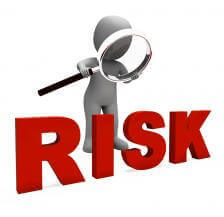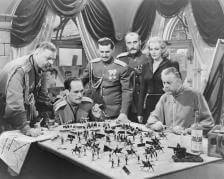What Is Risk Assessment?

Along with risk management, it’s one of those things that everyone should know.
Why? Simple—we all want things to go perfectly. We really do.
Case in point: Melvin was planning to build a replica of San Francisco constructed from 35,000 used Q-tips. It was going to be his magnum opus, his crowning achievement, and his excuse to buy Q-tips (a product he finds endlessly fascinating— I don’t even want to know why). Best of all, it was going to be his wedding present to his fiancée, Bernice. She loves handmade crafts, and his creative juices were flowing.
Unfortunately, it takes more than creative juices to construct a replica of San Francisco. There are risks a-plenty. He got 13,261 Q-tips into the project, and discovered that his tiny Q-tip trolley car was positioned incorrectly. The car was occupying the space where Twin Peaks was supposed to go. We call that an “Oops.”
We’ve all had “Oops” moments.
Sponsor: You can try Stamps.com risk-free! Plus you’ll get a free digital scale and up to $55 of free postage. Go to Stamps.com, click on the Microphone at the top of the homepage and type in GET IT DONE. That’s Stamps.com, enter GET IT DONE.
Failure Is Often Predictable
Many moons ago, I was part of a curriculum design team at Harvard Business School where I was charged with evaluating project management best practices to include in the MBA curriculum. Being rather fanatical about cool productivity tools (who’d have guessed?), I’ve happily used those tools and concepts ever since.
One striking best practice is a simple concept: Most projects fail for reasons you can predict in advance.
When a project is going on way too long, and bleeding money like a pit bull after a run-in with a porcupine, we just run to our boss and say, “I don’t know what happened. Maybe it was space aliens that shot us with a time distortion ray and made everything take longer than expected.”
Possible. Very, very possible. But no.
The real reason is that no one bothered to plan for the fact that every critical team member planned their summer vacation for a different week of summer. It blew up the team’s ability to coordinate, and turned the 12 weeks of summer into 12 actual days of progress.
The bad thing is; we could have known that. Risk assessment could have told us that.
If the team had sat down during project planning and looked at everyone’s availability, it might quickly have become apparent that we should try to match up our summer holidays. That way, we could all stop, go be holy, and then come back and tear up the project.
 Do a Pre-Mortem Risk Assessment
Do a Pre-Mortem Risk Assessment
Since most failures can be predicted in advance, use that knowledge! When you’re starting a project, sit down and brainstorm all the ways the project might fail. Be creative!
Think about staff availability, supplier flakiness, specifications getting screwed up, key people being unavailable for some reason, the collapse of Western civilization, the collapse of Eastern civilization, and of course, the failure of Miley Cyrus’s latest naked shenanigans.
Give each prediction two ratings:
- How likely is it to happen?
- How severe are the consequences?
You don’t need to figure out probabilities to the third decimal point. “Low,” “Medium,” and “High” are perfectly fine.
If you have any science fiction fans in your group, you probably now have several dozen post-apocalyptic scenarios on your list. It won’t be practical to address them all. So once you’ve rated the possible ways a project could fail, use those ratings to decide which ones you want to address. Obviously, any that are highly likely and highly severe should get extra-special attention.
Congratulations! You just ran your first risk assessment. In a future episode, we’ll learn about how to manage the risks you’ve identified.
In the meantime, you’ve got smart, competent, spectacularly skillful upper management. I’m sure they’ll let you extend your schedule and expand your budget to account for the things you’ve identified that might go wrong.
Do a Pre-Mortem Success Assessment
It only makes sense that if we can be Debbie Downer and predict the Zombie Apocalypse in advance, we should at least be able to predict something good in advance.
In a teleseminar on negotiation, Harvard Professor Mike Wheeler recommended a “Harold Happy” pre-mortem. Ask the team, “Imagine we’re two weeks, or months, into the project. Something has gone terribly, unexpectedly right! What is it? How will we capitalize on it? How can we notice it early and increase the chances of it happening?”
If Debbie Downer can help prevent disasters by doing risk assessment, Harold Happy can help steer us towards big wins by recognizing opportunity. Together, these pre-mortems are a simple form of a strategy technique called “scenario analysis.”
CEOs can (and should) use it to make sure their organization is prepared to survive and thrive in the next few years. All of us can (and should) use it to make sure our new projects stand the greatest chance of avoiding Skynet’s post-apocalyptic armies of terminator robots and succeeding in building empires and achievements beyond our wildest dreams!
I’m Stever Robbins. I work with CEOs to help them handle difficult personnel issues, groom high-potential employees, and devise strategies for market domination. If you want this, visit www.SteverRobbins.com
Risk and War Planning images courtesy of Shutterstock.


 Do a Pre-Mortem Risk Assessment
Do a Pre-Mortem Risk Assessment
